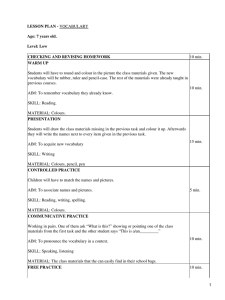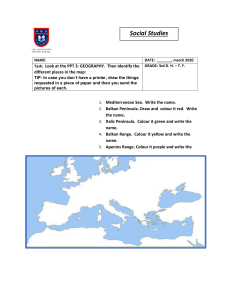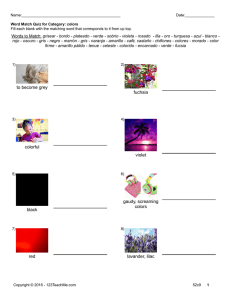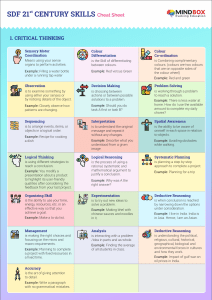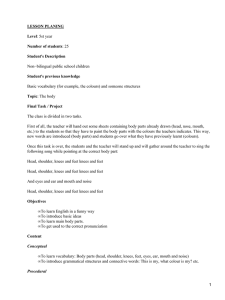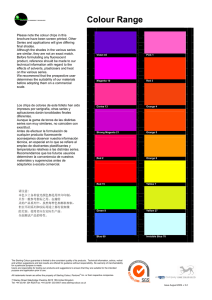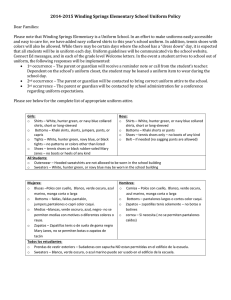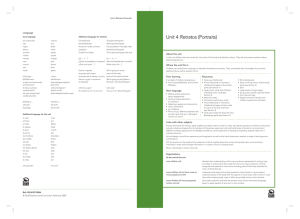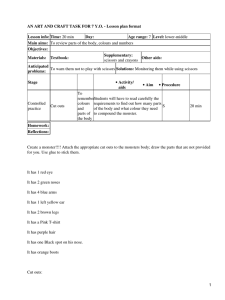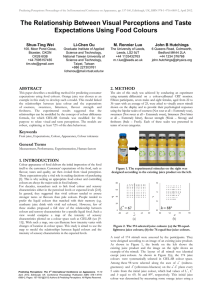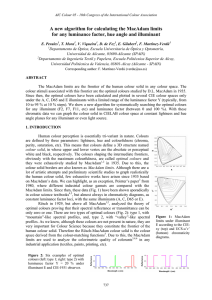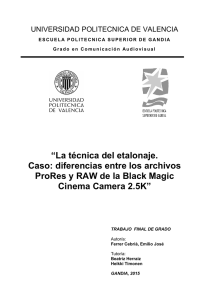Retratos (Portraits) 2. Colours - Association for Language Learning
Anuncio
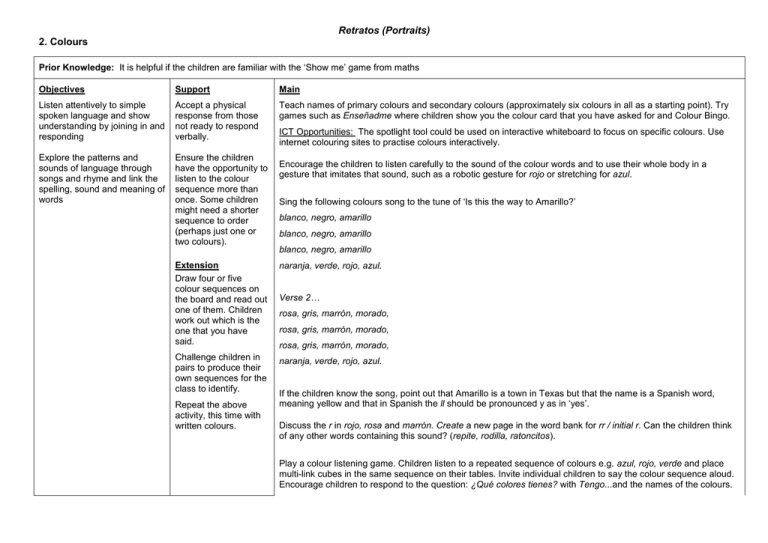
Retratos (Portraits) 2. Colours Prior Knowledge: It is helpful if the children are familiar with the ‘Show me’ game from maths Objectives Support Main Listen attentively to simple spoken language and show understanding by joining in and responding Accept a physical response from those not ready to respond verbally. Teach names of primary colours and secondary colours (approximately six colours in all as a starting point). Try games such as Enseñadme where children show you the colour card that you have asked for and Colour Bingo. Explore the patterns and sounds of language through songs and rhyme and link the spelling, sound and meaning of words Ensure the children have the opportunity to listen to the colour sequence more than once. Some children might need a shorter sequence to order (perhaps just one or two colours). ICT Opportunities: The spotlight tool could be used on interactive whiteboard to focus on specific colours. Use internet colouring sites to practise colours interactively. Encourage the children to listen carefully to the sound of the colour words and to use their whole body in a gesture that imitates that sound, such as a robotic gesture for rojo or stretching for azul. Sing the following colours song to the tune of ‘Is this the way to Amarillo?’ blanco, negro, amarillo blanco, negro, amarillo blanco, negro, amarillo Extension Draw four or five colour sequences on the board and read out one of them. Children work out which is the one that you have said. naranja, verde, rojo, azul. Challenge children in pairs to produce their own sequences for the class to identify. naranja, verde, rojo, azul. Repeat the above activity, this time with written colours. Verse 2… rosa, gris, marrón, morado, rosa, gris, marrón, morado, rosa, gris, marrón, morado, If the children know the song, point out that Amarillo is a town in Texas but that the name is a Spanish word, meaning yellow and that in Spanish the ll should be pronounced y as in ‘yes’. Discuss the r in rojo, rosa and marrón. Create a new page in the word bank for rr / initial r. Can the children think of any other words containing this sound? (repite, rodilla, ratoncitos). Play a colour listening game. Children listen to a repeated sequence of colours e.g. azul, rojo, verde and place multi-link cubes in the same sequence on their tables. Invite individual children to say the colour sequence aloud. Encourage children to respond to the question: ¿Qué colores tienes? with Tengo...and the names of the colours. Retratos (Portraits) 2. Colours Create a human ‘colour line’. Give individual children coloured cards and ask them to form into a line according to your instructions. Grammar Grammar Phonics focus Phonics focus For teachers: ‘Something’ is translated as algo e.g. Algo azul (something blue), algo pequeño (something small). Subject pronouns are not always included in Spanish. ‘It is’ is translated simply as es. For children: For teachers: For children: No specific focus j – rojo, naranja z – azul ll – amarillo d (like th in that) – morado, verde v – verde i – gris e – verde, negro rr / initial r – rojo, rosa, marrón rr / initial r – rojo, rosa, marrón In Spanish the r is trilled or rolled. This takes some practice. A good way to start is to try saying the word ‘drink’ with a Scottish accent. The trilling is even stronger if the r is at the start of a word or if there is a double r. Retratos (Portraits) 2. Colours Learning Outcomes New National Curriculum Links Children can: No specific links join in with a song repeat words modelled by the teacher use newly learned vocabulary to join in a game Throughout the week: Resources Create a page for rr / initial r in the word bank and add rosa, rojo and marrón. Teaching Tips Be aware of children who may suffer from colour blindness and ensure that they are able to make use of alternative clues when joining in with the activities. Ask the children to decide on an action for each colour. This can help the children to ‘own’ the action and it is more likely they will remember the new vocabulary. Large colour cards and children’s individual colour cards Multi-link cubes Interactive whiteboard Multimedia presentation Internet colouring sites – putting the word coloriar into a Spanish search engine should take you to useful sites El lenguaje del profesor / de la profesora Teacher Language El lenguaje de los niños Children’s Language Escuchad/Escucha Repetid/Repita Enseñadme/Enséñame Listen (plural/singular) Repeat (plural/singular) Show me (plural/singular) Los colores es : rojo azul amarillo verde morado naranja rosa marrón negro blanco gris Colours It’s: red blue yellow green purple orange pink brown black white grey Los colores rojo azul amarillo verde morado naranja rosa marrón negro blanco gris Colours red blue yellow green violet orange pink brown black white grey es… tengo… It’s… I have... Retratos (Portraits) 2. Colours ¿De qué color es? ¿Qué colores tienes ? Poneos en el orden correcto Which colour is it? Which colour(s) do you have? Put yourselves into the correct order
